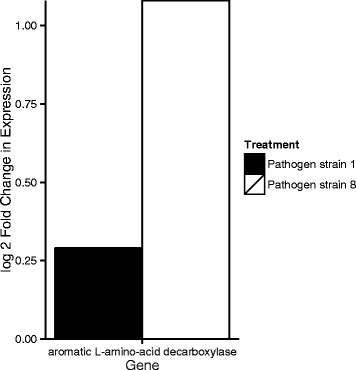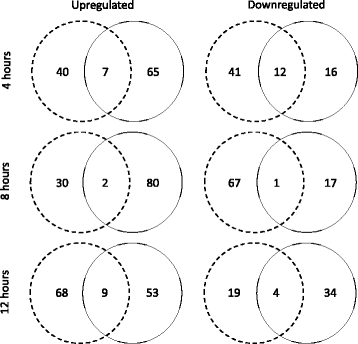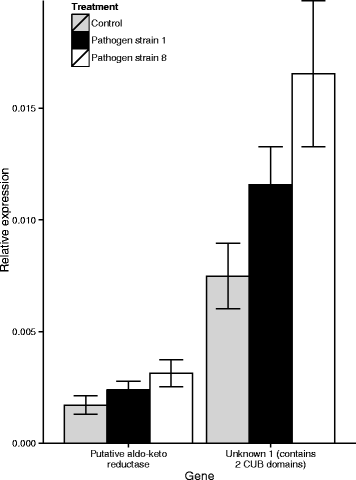Transcriptome profiling during a natural host-parasite interaction
- PMID: 26311167
- PMCID: PMC4551569
- DOI: 10.1186/s12864-015-1838-0
Transcriptome profiling during a natural host-parasite interaction
Abstract
Background: Infection outcome in some coevolving host-pathogens is characterised by host-pathogen genetic interactions, where particular host genotypes are susceptible only to a subset of pathogen genotypes. To identify candidate genes responsible for the infection status of the host, we exposed a Daphnia magna host genotype to two bacterial strains of Pasteuria ramosa, one of which results in infection, while the other does not. At three time points (four, eight and 12 h) post pathogen exposure, we sequenced the complete transcriptome of the hosts using RNA-Seq (Illumina).
Results: We observed a rapid and transient response to pathogen treatment. Specifically, at the four-hour time point, eight genes were differentially expressed. At the eight-hour time point, a single gene was differentially expressed in the resistant combination only, and no genes were differentially expressed at the 12-h time point.
Conclusions: We found that pathogen-associated transcriptional activity is greatest soon after exposure. Genome-wide resistant combinations were more likely to show upregulation of genes, while susceptible combinations were more likely to be downregulated, relative to controls. Our results also provide several novel candidate genes that may play a pivotal role in determining infection outcomes.
Figures





References
Publication types
MeSH terms
Grants and funding
LinkOut - more resources
Full Text Sources
Other Literature Sources

